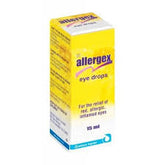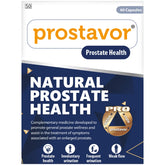Frostbite
Frostbite is a serious cold-related injury that occurs when skin and underlying tissues freeze due to exposure to cold temperatures. This condition can lead to tissue damage, loss of sensation, and in severe cases, amputation. Understanding the symptoms, treatment, and prevention of frostbite is essential for minimizing its impact and protecting against cold-related injuries.
Definition
Frostbite is a medical condition caused by exposure to cold temperatures, resulting in freezing of the skin and underlying tissues. It typically affects extremities such as fingers, toes, nose, ears, cheeks, and chin, where blood flow is reduced during cold weather.
Symptoms
Symptoms of frostbite may include:
- Numbness or tingling: In the affected area.
- Cold skin: Skin may feel cold or firm to the touch.
- Change in skin color: Skin may appear pale, white, or grayish-yellow.
- Hard or waxy appearance: Due to frozen tissues.
- Blisters: In severe cases, fluid-filled blisters may develop.
- Pain: As the affected area thaws.
Stages of Frostbite
Frostbite can be classified into several stages:
- Frostnip: The mildest form, characterized by numbness and pallor of the skin without permanent damage.
- Superficial Frostbite: Involves freezing of the skin and superficial tissues, resulting in blistering and tissue damage.
- Deep Frostbite: Affects deeper tissues, including muscles, tendons, and bones, leading to severe tissue damage and potential loss of digits or limbs.
Causes
Frostbite occurs when skin and tissues are exposed to cold temperatures for an extended period, causing ice crystals to form within the cells and blood vessels to constrict, reducing blood flow to the affected area. Factors that increase the risk of frostbite include:
- Extreme cold: Subzero temperatures, wind chill, and wet conditions.
- Inadequate clothing: Not dressing warmly or wearing wet clothing.
- Wind exposure: Wind can accelerate heat loss from the body.
- Immersion in cold water: Increases the risk of frostbite.
Treatment
Immediate treatment of frostbite is crucial to prevent further tissue damage. Treatment may include:
- Get indoors: Move to a warm environment as soon as possible.
- Remove wet clothing: Replace with dry clothing and blankets.
- Warm affected area: Place affected body parts in warm (not hot) water or use body heat to warm them.
- Do not rub: Avoid rubbing or massaging the affected area, as it can cause further damage.
- Protect from re-freezing: Keep the affected area warm and dry to prevent re-freezing.
- Pain management: Over-the-counter pain relievers may help alleviate discomfort.
Prevention
Preventing frostbite involves:
- Dressing appropriately: Wear multiple layers of loose, dry clothing, including a hat, gloves, scarf, and insulated footwear.
- Limit exposure: Minimize time spent outdoors in extreme cold or windy conditions.
- Stay dry: Change wet clothing promptly and avoid sweating excessively.
- Stay hydrated: Drink plenty of fluids, as dehydration can increase the risk of frostbite.
- Be aware of wind chill: Wind can accelerate heat loss from the body, increasing the risk of frostbite.
Complications
Complications of frostbite may include:
- Tissue damage: Including skin necrosis, gangrene, and permanent scarring.
- Infection: Due to compromised skin integrity.
- Nerve damage: Resulting in loss of sensation or chronic pain.
- Amputation: In severe cases, amputation of affected digits or limbs may be necessary.
Conclusion
Frostbite is a serious cold-related injury that can lead to tissue damage, loss of sensation, and long-term complications if not promptly treated. Understanding the symptoms, risk factors, and prevention strategies is essential for minimizing the risk of frostbite and protecting against cold-related injuries.
In summary, preventing frostbite involves dressing warmly, avoiding prolonged exposure to extreme cold, and staying dry and hydrated. Prompt recognition and treatment of frostbite are crucial for minimizing tissue damage and preventing long-term complications.
For individuals at risk of frostbite, taking precautions such as dressing warmly, staying dry, and avoiding prolonged exposure to cold temperatures can help prevent this potentially serious condition. If frostbite does occur, seeking prompt medical attention is essential for minimizing tissue damage and promoting healing.
- Complication of Frostbite
- Diagnosis of Frostbite
- Frostbite
- Frostbite myths
- How is Frostbite treated?
- Medicine for Frostbite
- Remedies for Frostbite
- Support for Frostbite
- Symptoms associated with Frostbite
- The best British Online Pharmacy
- Top 10 UK Pharmacies
- Treatment for Frostbite
- What causes Frostbite
- What is Frostbite
- Where can I buy medicine for Frostbite in the UK
- ZimSeller Pharmacy



















